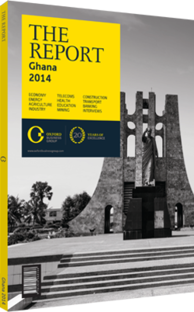OBG talks to Abdalla Salem El-Badri, Secretary-General, OPEC

Interview: Abdalla Salem El-Badri
What effect will the growth of North American and non-OPEC production have on OPEC output?
ABDALLA SALEM EL-BADRI: North American tight oil production has clearly been the main force behind non-OPEC supply increases in recent years. These are all welcome developments: it is good for these countries in terms of their economies and jobs, adds depth to global supply, aids market stability and provides further proof to consumers that the world is not running out of oil.
As for the impact on OPEC production, we do not see it as a major challenge. In the near term, OPEC liquids production will remain steady. While in the long term, we expect demand for OPEC liquids to rise by more than 13m bpd by 2040. This amount is greater than the expected increase in non-OPEC supply over the same period, at just under 8m bpd. OPEC members are committed to investing in production to ensure that consumers receive oil when they need it.
Where are the greatest risks to meeting OPEC production targets in the years leading up to 2016?
EL-BADRI: For OPEC, the focus is on ensuring that the market is stable and balanced in terms of supply and demand. This benefits us all, and is, in fact, the main challenge for all the industry’s stakeholders. As for risks, perhaps the chief one remains the global economic recovery and how this pans out in the coming years. Other challenges are a possible human resource shortage, rising costs, market speculation and excessive volatility, as well as unknowns such as future geopolitical developments or weather-related events.
Given the decline in China’s economic growth, where do you expect to see the biggest jumps in demand?
EL-BADRI: Though challenges remain, the world economy is showing signs of recovering, and we expect to see higher economic growth in 2015 than in 2014. OECD countries are expected to continue recovering in the short- to medium-term. The US economy is now growing at a healthy rate with low unemployment. However, other OECD economies continue to face various growth impediments – such as fiscal and debt difficulties – that keep their economies growing below their potential. Large emerging economies are also facing some headwinds, but there is no doubt that their expansion is central to long-term growth prospects. We expect demand to rise by over 21m bpd by 2040, reaching 111.1m bpd. Of this increase, developing Asia accounts for the majority.
How much of a concern is speculation in oil pricing, and what can or should be done to limit it?
EL-BADRI: Speculative investment flows can distort the price of crude oil. The challenge, however, is not to eliminate speculation altogether. This is part of the market. The underlying issue is, rather, excessive speculation and extreme volatility. That is why it is important to keep a watchful eye on such activities. It is vital that the market focus on actual market fundamentals and look continually to mitigate such distortions.
How accurate are current estimates of unconventional resources, given their frequent revision of late?
EL-BADRI: We can all appreciate that estimates sometimes need to be revised. These resources are still in the early assessment phase; in fact, in some countries, such as in the Middle East, they have not even been assessed. It is clear, however, that there are significant resources in a number of countries. In a 2013 report by the US Energy Information Administration on technically recoverable shale oil resources, the leading countries were Russia, with 75bn barrels, and the US, with 58bn. Libya and Venezuela, both OPEC member countries, were also in the top 10.
These resources will prove complementary to the global base of already known conventional reserves. In 2012, the US Geological Survey estimated that the world’s ultimately recoverable resources of crude oil and natural gas liquids were more than 3.8trn barrels, a figure significantly higher than in its survey in 2000.
You have reached the limit of premium articles you can view for free.
Choose from the options below to purchase print or digital editions of our Reports. You can also purchase a website subscription giving you unlimited access to all of our Reports online for 12 months.
If you have already purchased this Report or have a website subscription, please login to continue.

